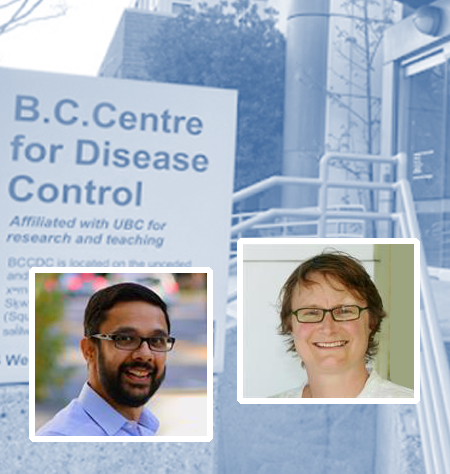
“This was an incredibly useful process to formally document the challenges faced by physicians working in the TB Clinics. We can now use the information gathered to communicate with leadership and better advocate for key issues including pay equity, a functional EMR, and clinic processes that optimize the physician experience and expertise, without compromising patient care.
We also recognize that retention is an issue across the health care system and that the findings in this project may resonate in other areas, and possibly benefit other physicians.” – Dr Victoria J Cook, Medical Head, BCCDC Provincial Tuberculosis Services (photo: right)
Physician experience project: BC Centre for Disease Control (BCCDC) Provincial Tuberculosis (TB) Services
Recruitment and retention of physicians is a priority across the health care system and for BCCDC's Provincial TB Services, where Medical Head Dr Victoria J. Cook is looking to make the workplace more attractive for new recruits and to reduce the departure of existing physicians.
The majority of physicians providing care at TB Services are trained in Respirology or Infectious Diseases. These physicians are paid by sessions to support the TB clinic in addition to their own busy medical practices. A number of them provide more regular care at TB Services but are retired and still working, or will soon retire, leaving the provision of service at risk.
Pain points and recommendations
In an effort to better understand the physician experience at TB Services in the context of ongoing recruitment and retention concerns, Dr Cook sought feedback from 19 past and present physicians through an online survey and structured interviews (in person and virtual).
Through the engagement process, physicians identified a number of pain points that hinder the provider and patient experience in areas of clinic flow, efficiency, structural issues, and pay inequity.
The physicians also made thoughtful recommendations for improvements on issues of concern.
Those range from addressing EMR dysfunction and recurrent system break-downs, to making best use of physician time and scope including options for delegating tasks to team members, streamlining clinic processes, optimizing patient scheduling, improving collaboration with nursing staff, and addressing processes for continuity of care and complex patient care.
Next steps for taking collaborative action
Phase two of the project includes discussions with BCCDC’s Chief Operating Officer, operational leaders, and MSA executives on taking specific steps towards implementing recommendations, leading to meaningful changes and a more attractive workplace.
“There are a few different issues that were identified, some that are probably within our control or influence and others that are less so, like pay or pay inequities and I think there are other mechanisms to address that. The other pieces were around working conditions here that was a reoccurring theme that we heard.
This project touches on both access to specialist services and encouraging health authority-MSA collaboration.” – Dr Mayank Singal, MSA President & Public Health and Preventive Medicine Specialist, BCCDC Epidemiologist (photo: left)
Learn more: Read findings and recommendations (PDF)
![]()
 |
 |
 |
